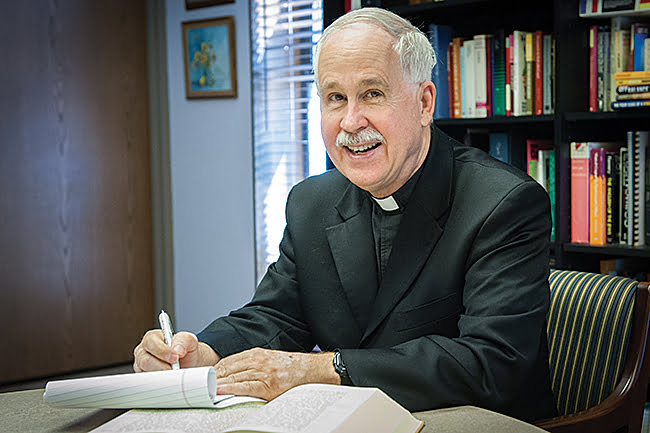
Father Mike Stubbs is the pastor of Holy Cross Parish in Overland Park and has a degree in Scripture from Harvard University.
by Father Mike Stubbs
Teachers know that there are various ways to establish their authority as teachers. It can happen through their reputation for learning and wisdom.
It can happen through fear of punishment. Or it can happen because of the teacher’s concern and care for the students.
Sunday’s Gospel reading, Mk 1:21-28, tells us the first of many healing stories in the Gospel of Mark. It takes place in the synagogue at Capernaum, where Jesus is teaching.
The story also emphasizes Jesus’ authority as a teacher: “The people were astonished at his teaching, for he taught them as one having authority and not as the scribes.”
The healing miracles that Jesus performs validate his authority as a teacher: “All were amazed and asked one another, ‘What is this? A new teaching with authority. He commands even the unclean spirits and they obey him.’” In this particular healing, even the demon that Jesus drives out recognizes his authority. It claims, “I know who you are — the Holy One of God.”
In calling Jesus, “the Holy One of God,” the demon expresses a truth that the human beings present in the synagogue do not know. By identifying Jesus, it may also be attempting to exert control over him. (In the ancient world, it was believed that knowledge of a person’s name or identity could facilitate control over the person.)
Despite the demon’s attempt, Jesus succeeds in expelling it. He commands the demon: “Quiet! Come out of him!” Jesus’ order of silence anticipates Jesus’ tendency in Mark’s Gospel to conceal his identity as the Messiah.
This characteristic of Mark’s Gospel is called the “messianic secret.” Evidently, Jesus wished to avoid people mistaking him as a worldly leader, rather than a spiritual leader.
Even though the Gospel reading emphasizes Jesus’ role as a teacher, it does not present the content of his teaching.
Compared to the other Gospels, Mark’s Gospel includes fewer of Jesus’ teachings. It does not contain a Sermon on the Mount. It shares with us only five parables.
At the same time, Mark’s Gospel begins Jesus’ public ministry with the core of his teaching, the kerygma, which we heard in last Sunday’s Gospel reading: “The kingdom of God is at hand.”
The healings that Jesus works serve as a visible sign that God’s kingdom is already present, in part. In that sense, the miracles form part of Jesus’ teaching.
He not only teaches about God’s kingdom, he reveals it.

